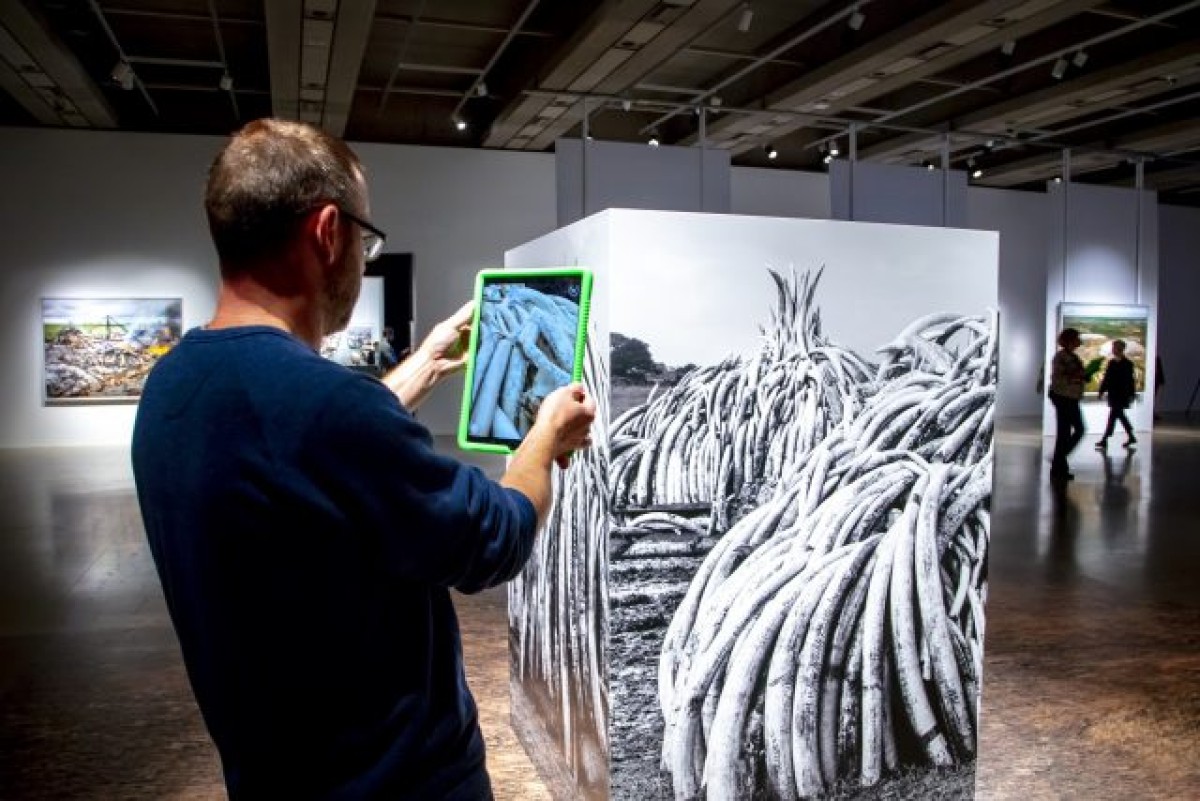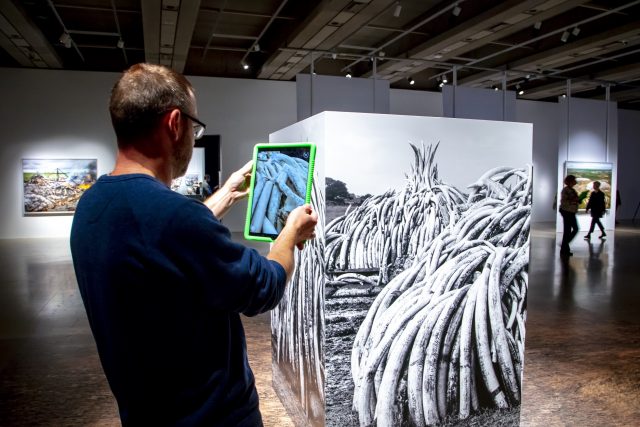Animals On the Brink

Edward Burtynsky, Jennifer Baichwal, Nicholas de Pencier. AR #2, President Kenyatta’s Tusk Pile, April 28, Nairobi, Kenya, 2016. Photogrammetric augmented reality (AR). Courtesy of the artists.
With thousands of species endangered or on the brink of extinction, what will we lose when they’re gone? We ask this question in On the Brink, the fifth episode of our podcast series Into the Anthropocene. The podcast explores issues sparked by our exhibition, Anthropocene, which features stunning artworks by acclaimed photographer Edward Burtynsky and award-winning filmmakers Jennifer Baichwal and Nicholas de Pencier that reveal the scale of human impact on the planet.
In episode 5 of the podcast, we speak with renowned wildlife biologist Dr. Winnie Kiiru about endangered African elephants. Dr. Kiiru tells us about an ivory tusk burn in Nairobi National Park, which she helped organize. On April 30, 2016, over 100 tonnes of ivory from elephant tusks and rhinoceros horns, confiscated from poachers by the Kenyan government, were set ablaze. The burn signalled to the world the symbolic end of the illegal market for ivory and horn.
Dr. Kiiru describes that day: “I had images of myself, all beautifully dressed going up to say hello to the President, passing, and ushering him to the piles. But instead, I was covered in mud from head to toe. We stayed up to about midnight and noticed there were lions standing in the distance from the flames – attracted by the smell of the skins and hides. There we were, sitting, watching this spectacle – and there were lions watching with us.”
In our exhibition Anthropocene, you can experience an augmented reality version of the largest tusk pile before it was burned, comprised of more than 2,000 high resolution photographs of the three-metre-tall pile from every angle. The images were later stitched together and transformed into a life-sized virtual 3D sculpture – an important monument to this powerful event.
Also in this episode, we speak with Elizabeth Kolbert, staff writer at The New Yorker and author of the Pulitzer Prize-winning book, The Sixth Extinction. She shares an amazing story about witnessing coral spawning on Australia’s Great Barrier Reef. “Reefs are incredibly diverse ecosystems. When you're on a reef – a healthy, functioning reef, you'll see an amazing array of fish, octopi, sharks, turtles and more. It's like a bazaar where everyone comes to feed, be fed and exchange nutrients. It's amazingly full of life and the most extraordinary sight a person can see.”
Humans aren’t just putting animals at risk – we’re damaging ourselves. Poet Adam Dickinson closes the episode with his eye-opening personal account of testing what’s inside him and how it inspired his latest book Anatomic. Want to know what he found? You’ll have to check out the podcast to find out.
Download the Into the Anthropocene podcast, recently selected as one of Apple’s New and Noteworthy podcasts. Subscribe at our website, or at Apple Podcasts and Google Play.
Timed-entry tickets for Anthropocene are on sale now at AGO.ca, in person and by phone.
Are you an AGOinsider yet? If not, sign up to have stories like these delivered straight to your inbox every week.






